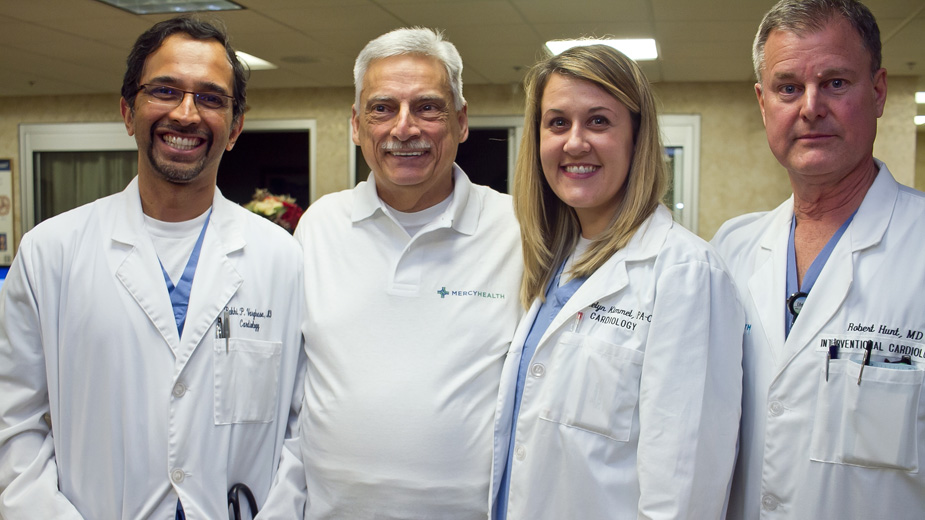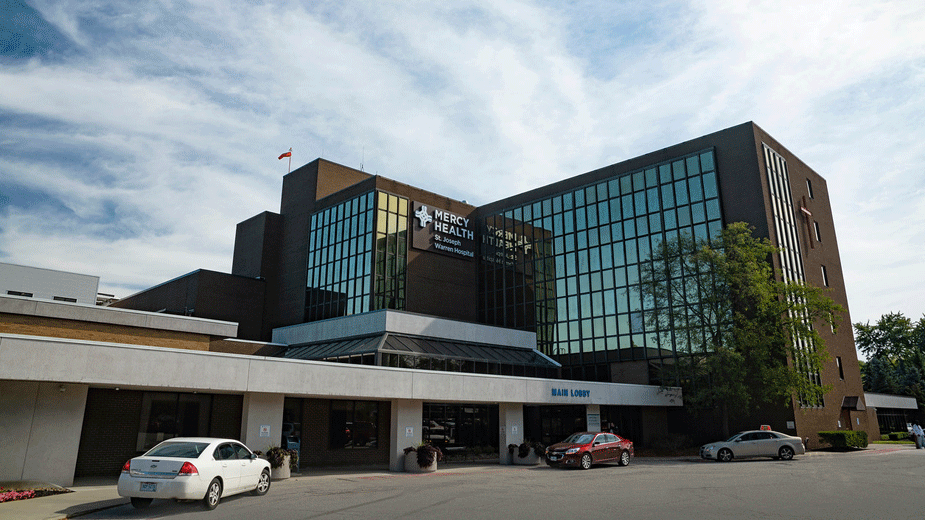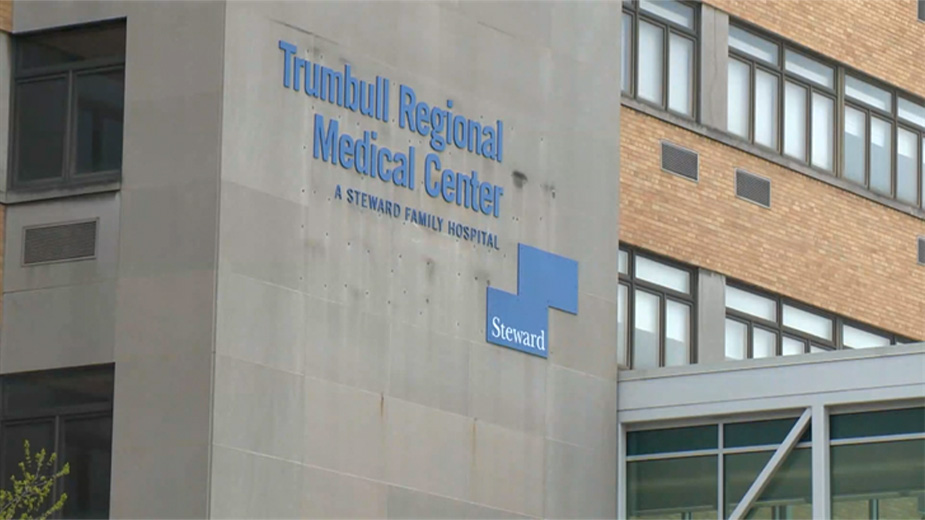St. E’s Performs New Aortic Valve Procedure
YOUNGSTOWN, Ohio – For the first time in the Mahoning Valley, a team at St. Elizabeth Youngstown Hospital performed a transcatheter aortic valve replacement procedure.
They performed the operation last week.
Then, later in the day on March 1, they did it again. And twice more on March 9. And next week, the team will do three more.
“This is one of the biggest advancements in cardiology and cardiac surgery in a long time,” says Dr. Robert Hunt, an interventional cardiologist on the team performing the surgeries.
The new procedure (WATCH VIDEO) was announced at a press event Thursday.
The minimally invasive surgery is performed on patients who suffer from severe aortic stenosis, or a narrowing of the aortic valve to the heart. While there are minor variations on the surgery nationwide, those at St. Elizabeth’s have been done by inserting sheathes into the femoral arteries, one on each side of the body, in the groin and threading a catheter with a balloon around it into the heart. There, the balloon is expanded, reopening the valve.
Then, a second catheter with a second balloon and an artificial valve made from cow tissue is inserted and expanded to create a new valve in the heart chamber. The full procedure takes about 90 minutes, Hunt says.
“Up until recently, the only treatment option was surgery where a surgeon would open the chest, excise the valve and put in a new one,” he explained. “That’s a major undertaking for the elderly, who often have other problems as well.”
St. Elizabeth’s is the only hospital between Cleveland and Pittsburgh that offers the procedure and one of only about 350 nationwide, according to officials.
After going through nine months of training and visiting other hospitals, including the Cleveland Clinic and Cedars-Sinai Hospital in Los Angeles, having such as operating schedule so early on proves how much the procedure is needed here, Hunt says.
“These are reserved only for people deemed to be a high risk for normal [open heart] surgery,” he says.
The biggest advantage of the surgery, Hunt says, is the recovery time. Where patients who undergo open-heart surgery for aortic stenosis are typically confined to a bed for days, possibly weeks, after surgery, those who have the transcatheter aortic valve replacement, or TAVR, procedure, are out within a day or two.
“I went into surgery on Tuesday at 11:30. By that night, I was sitting up in the ICU,” says Earnest Federico, the second patient to have the surgery at St. Elizabeth’s. “The next day I was walking. And on Thursday I was discharged with some blood thinners and blood pressure medication.”
Federico, who lives in Poland, had a triple heart bypass in 2006, preventing him from having open-heart surgery. As just the second patient to have the surgery in the Mahoning Valley, he was remarkably calm going into the operating room, he said.
“I know these doctors are experts. I watched videos on what kind of training they went through. There are videos of the TAVR procedure on YouTube,” he said. “All the information is out there. I was completely at ease knowing that it was all going to be taken care of.”
Surgeries are a team effort, Hunt added, emphasizing that while he was the one addressing reporters, another 25 people joined him in the operating room for the surgery.
“Each had a different role,” he said, including heart surgeons, imaging specialists, interventional specialists, the anesthesia team and technologists. “We were all very excited to be able to do the procedure and hopefully the patients can benefit as we think they will.”
And so far for Federico, he felt the benefits almost immediately.
“It’s a world of difference. I can breathe better. My lung capacity is more full. I have more energy,” he said. “I can’t run marathons yet but I’m walking around much better.”
Among the symptoms of aortic stenosis, Hunt explained, are shortness of breath, chest pain and passing out. Each is caused by a lack of blood flow because of the narrowed heart valve.
The procedure has been performed only about five years, meaning the long-term results of TAVR aren’t entirely known, Hunt said, but immediate results show promise.
“The results so far comparing patient survival and well-being to those that have had surgery are almost identical. The longer we go, the more we’ll know,” he said. “The valves may fail over time, but they don’t seem to be doing anything at an abnormal rate at this point.”
For now, the TAVR procedure is available only to those with severe narrowing of heart valves and medical histories that make open-heart surgery risky, but could be open to more patients in about a year, Hunt said.
VIDEO:
TAVR Cardiac Valve Replacement at St. E’s
Pictured: Rehki Varghese, interventional cardiologist, patient – Earnest Federico, Jocelyn Kimmel, valve clinic coordinator and Robert Hunt, interventional cardiologist.
Copyright 2024 The Business Journal, Youngstown, Ohio.



